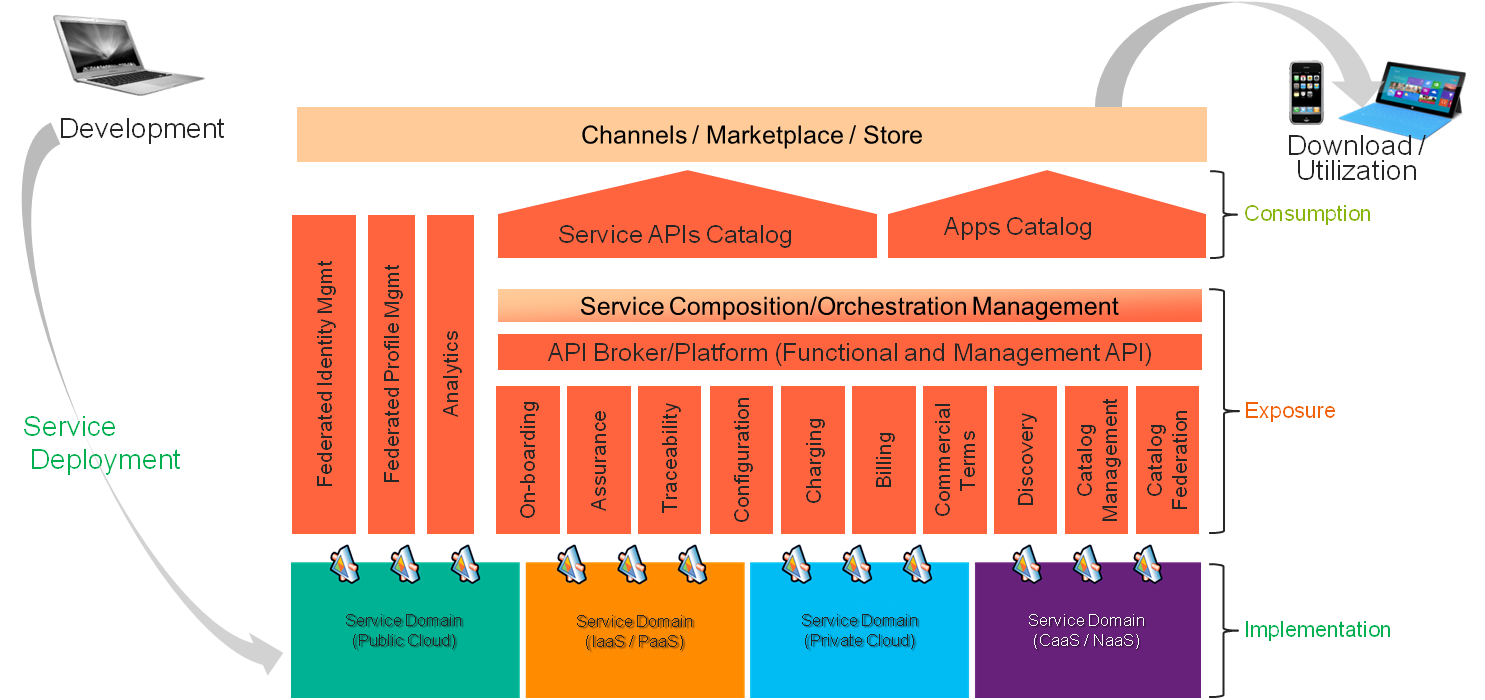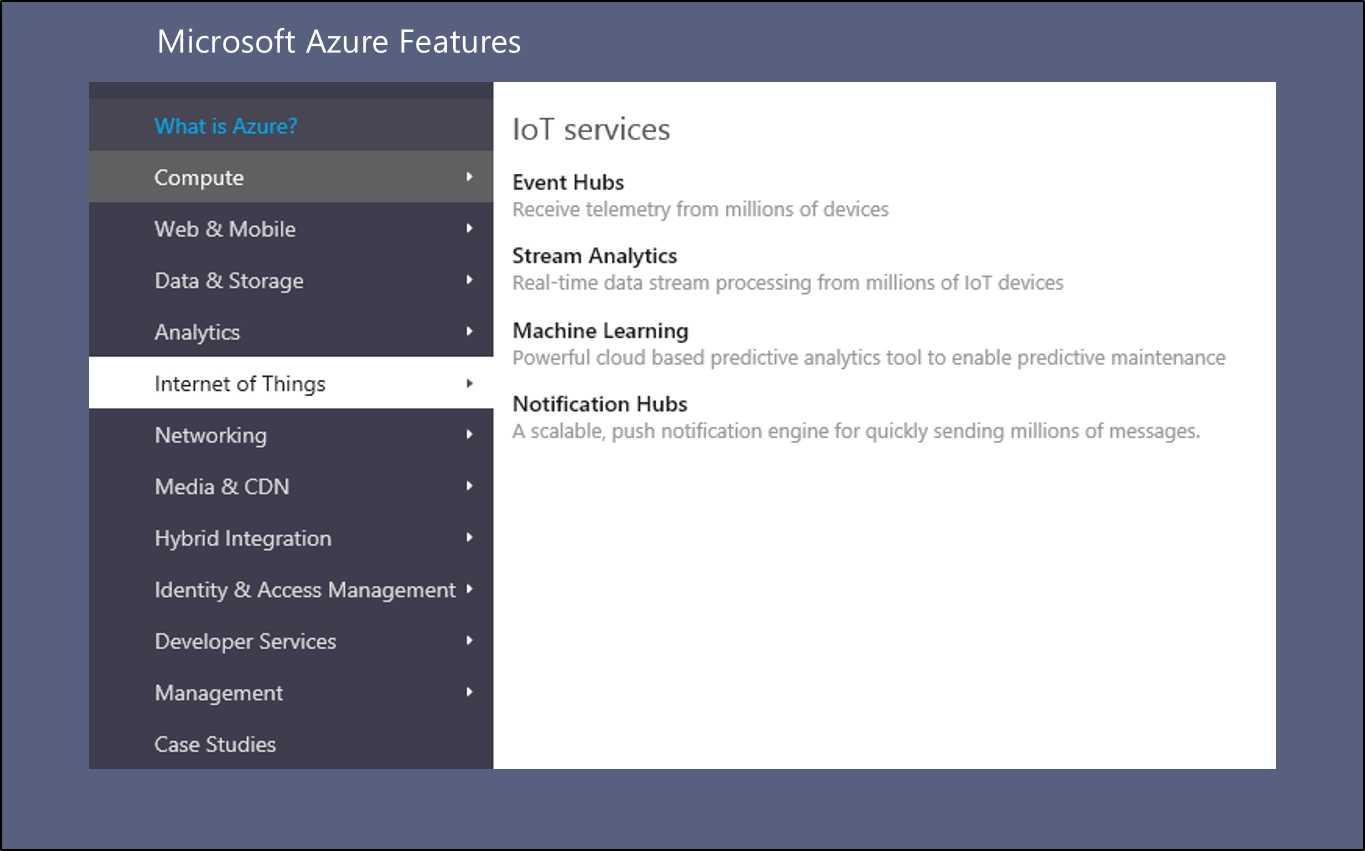Microsoft Azure IOT Services and TM Forum Open Digital Framework
IOT can have lots of different meanings. One way to look at nearly any IOT scenario is as a digital ecosystem. The question then becomes: What does it take to setup an IOT related digital ecosystem and what does it take to join one?
For service providers interested in establishing a digital ecosystem, the TM Forum has published the Digital Services Reference Architecture (DSRA) and has recently expanded that work to define the characteristics of a Digital Ecosystem Platform (DEP). In this body of work, several proof of concepts are being used to validate the required services a Digital Ecosystem Platform needs to provide. Use cases include Connected Car, Connected Healthcare and SDN/NFV (ZOOM) Connected Network Functions scenarios.
Microsoft Azure serves as a strong working example of a Digital Ecosystem Platform from Microsoft providing the necessary services for multiple digital ecosystems to thrive. In fact, many of the features of Azure and its associated Microsoft Commerce Platform have been used as commercial best practice examples contributed to describe the Digital Services Reference Architecture and Digital Ecosystem Platform(s).
A digital ecosystem platform must provide a number of supporting reusable services. These services can either be provided by the platform itself or the platform can act as a broker providing easy access to other 3rd party services supplying the desired functionality. This is a very important concept. Microsoft Azure can either provide the base platform supplemented by additional supporting 3rd party services or it can reinforce another service provider's IOT platform by supplementing it with various supporting services.
Some of the more commonly mentioned DEP supporting services include:
- Commerce Functions – all of the B2B3X, Catalog, Stores, Offer, Order, Bundling, Charging, Billing and Settlement functions. Microsoft offers these today via the Microsoft Commerce Platform.
- Identity Management – mechanisms such as provided by Active Directory and ADFS including the ability to federate with other ID Management Systems including OpenID.
- Profile Management – The basis for policy based rules impacting many different transactions. Microsoft provides this on multiple levels including the ability to maintain different personas with different security rules across common devices and services.
- API Management – Services that provide lifecycle management of APIs used to expose and consume services or functions via catalogs.
- Data Analytics – A set of services designed to provide the various types of data analytics services needed by typical IOT Scenarios.
- Event Notification and Messaging – Services designed to raise and track events, invoke rules via policies, and route messages between service end points.
- Service Composition and Orchestration – Services that facilitate service mashups or service chaining in the case of SDN/NFV.
- Brokerage of Services and APIs – Services that help locate and select services especially in conjunction with automated virtual resource management.
- Service and Platform Management – Services that enabled management of hosted digital services/functions plus supporting virtualized cloud resources including KPIs and the APIs to expose them. Many of these are provide via the Microsoft Azure Management Portal and APIs.
At the www.azure.com site under Features one can see how Microsoft has enabled many different services to support various digital ecosystems. In addition, there are other sets of services specifically designed to help support context specific digital ecosystems. Two significant examples are Azure Media & CDN and Azure IOT Services.
As mentioned in a MS Open Technology Inc Blog: "When it comes to trying Azure IoT services, the open source project ConnectTheDots.io is a great starting point. Last week...many updates to the project to allow for even more sensors data types to be sent and displayed in the ConnectTheDots example web site. ...Added were new sensors and devices examples to the project including sound data and data from the Microsoft Band sensors to Azure."
While these services do not provide a turnkey solution for setting up and maintaining digital ecosystems, the Microsoft Azure services shown under Features in the graphic do provide all the essential elements to accelerating a CSP's efforts to setup and maintain digital ecosystems with all the agility needed for today digital marketplace.
For additional resources please visit:
Azure Digital Services Platform:
https://azure.microsoft.com/en-us/overview/what-is-azure/
TM Forum Open Digital Program:

